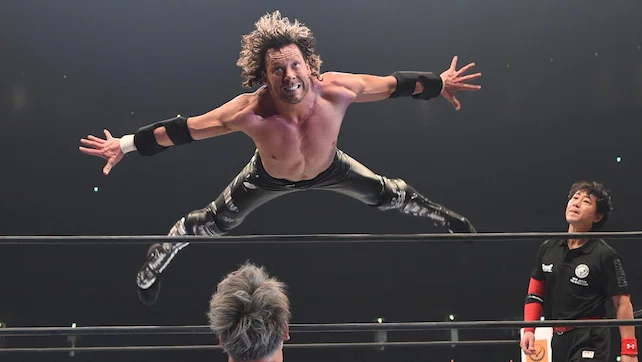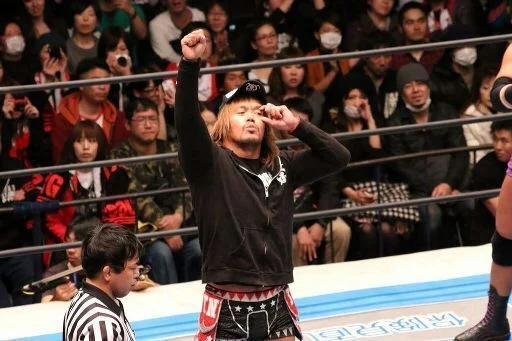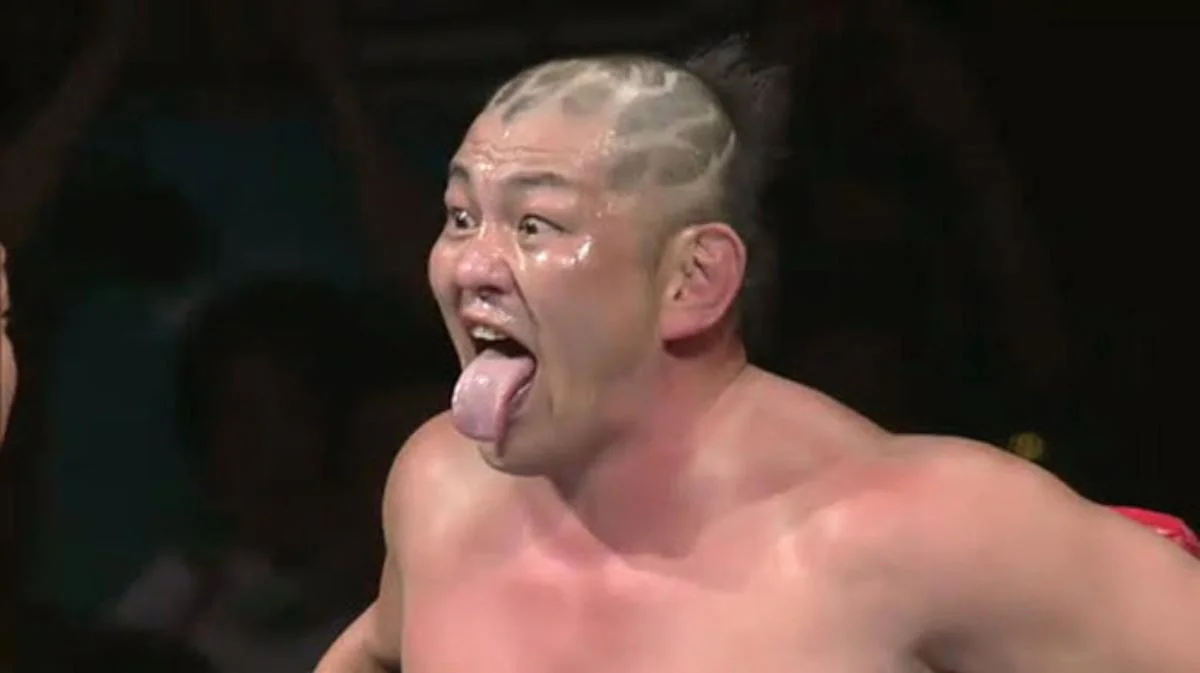New Japan for the New Fan: Part 1
Don’t tell anyone I’ve told you this, but if you want to start getting into NJPW, you don’t actually need to know what move Manabu Nakanishi used to win the 1998 G1 Climax finals.
If you’re a fan of WWE, over the past couple of years you might have noticed commentators referring to debuting superstars’ time “in Japan(™). Just, you know, the general Japanese region. Not for any specific promotion, like.” Wrestlers like AJ Styles, Shinsuke Nakamura and Finn Balor have entered WWE to much fanfare for their time spent in this mythical preternatural place where Real Wrestlers come from. More often than not, they’re talking about New Japan Pro Wrestling, arguably Japan’s biggest pro wrestling promotion, and one that in recent years has become somewhat of an international competitor to WWE.
Online wrestling fandom can often be depressingly gatekeeper-y, and if you haven’t yet taken the plunge into New Japan’s product, the attitude of some internet fans might be enough to put you off. Don’t tell anyone I’ve told you this, but if you want to start getting into NJPW, you don’t actually need to know what move Manabu Nakanishi used to win the 1998 G1 Climax finals, or how many times Tanahashi defended the IC Championship on a Wednesday. I’m not going to tell you why you should be watching; if you want to start adding NJPW to your plate at the wrestling buffet table, hopefully this four-part series Jo and Kefin have asked me to write will go some way to facilitating that extra portion.
How To Watch New Japan
First off, if you’re reading this, and this is the only language you can read, you might be discouraged by the prospect of getting into a product that’s predominantly in Japanese. With the launch of their streaming service NJPW World in December 2014 and the addition of English commentary in late 2015, it’s never been easier for non-Japanese speaking fans to follow along. International expansion is very much on the menu, with shows in America and Australia, the launch of a dojo in Los Angeles, and working relationships with promotions in England and Mexico, so increased accessibility for international viewers has been a big focus. NJPW World is essentially their version of the WWE Network; the key difference being that along with their big monthly shows, all other televised events are broadcast on the service and archived immediately, so you don’t have to wait 30 days like you do with RAW and SmackDown on the Network. In other words, all of the canon is on NJPW World as soon as it happens. NJPW have also started making English subtitles for all promos available on their YouTube channel, usually either the day of or the day after an event.
What To Expect From Your First New Japan Show
When you’re watching a typical NJPW show, there are a few key differences in the presentation and in-ring style from WWE or other Western promotions. First off, there are no women’s matches. We’re talking wall-to-wall hunky dude action. That’s not to say Japanese women’s wrestling is ignored or pushed to the side; women-centric promotions such as STARDOM and Pro Wrestling Wave have their own passionate fans and are gaining in popularity at comparable rates to much larger promotions.
New Japan is presented in a much more straightforward sports style than WWE. They’re less reliant on frequent camera cuts, there are no on-screen authority figures booking the show seemingly on the fly, and there are no backstage segments. To get all pretentious for a second, the stories are told in the ring. The now-English subtitled promos occur following each match involving usually all of the participants, but are uploaded to YouTube separately, and are in a straightforward interview style. Cuts away from the action are also very rare, and the production style is more focused on making it easier for the viewer to follow the action in the ring.
In a typical month, there’ll be one big show, equivalent to a WWE pay-per-view, with several smaller ‘Road To’ shows leading up to it. These ‘Road To’ shows fulfil the functions of RAW and SmackDown; building up to the big matches featured at that month’s show. The majority of matches on these shows are largely comprised of tag matches, featuring anywhere up to 5 wrestlers on each side. The preliminary matches tend to feature ‘Young Lions’, the NJPW term for rookies; we’ll get into their role in another article, and established veterans. As we move up the card, matches between NJPW’s different factions take place; again, we’ll touch on them more in depth later. The cards for these shows are announced in advance and are ran through at the top of the show by the announcer; swerves are incredibly uncommon.
Key Figures
The next article in this series will go deeper into NJPW’s pretty hefty roster, but as a general introduction, I thought I’d take you through some of the most-featured wrestlers and their whole vibe.
Kazuchika Okada: Leader of the CHAOS faction. The current IWGP Heavyweight Champion. The big kahuna, the whole shebang, the cat’s pyjamas, the undisputed Ace of New Japan Pro Wrestling. Their John Cena, essentially. His whole character is that he’s the best and most entertaining wrestler, who draws the most money. His nickname is ‘The Rainmaker’, and money literally falls from the ceiling during his big entrances. He’s also a hunk of Biblical proportions.
Kenny Omega: Leader (for now?) of the Bullet Club faction. Chances are that Okada and Omega’s 2017 trilogy of highly-rated matches are what piqued your interest if you weren’t already watching NJPW, and for good reason. He’s putting on matches that make Dave Meltzer break his own arbitrary system, earning the nickname ‘Best Bout Machine’; he’s the internet’s favourite wrestler, but crucially, he doesn’t have to be yours.
Tetsuya Naito: Leader of the Los Ingobernables de Japon faction. Think the anti-hero character of 1997/1998 Stone Cold Steve Austin, the cocky arrogance and wrestling skills of 2012 CM Punk, and the stoic calmness of 2008 Chris Jericho somehow all rolled into one. Most recent winner of the G1 Climax tournament. Rejected by the fans for being pushed against their will in 2013, he underwent a serious character transformation and has risen to previously unimaginable heights. Tranquilo.
Minoru Suzuki: Right off the bat, his theme song is a power ballad, so that’s some entirely objective quality points right there. Leader of the Suzuki-gun (Suzuki’s army) faction. The current IWGP Intercontinental Champion. The grumpiest and meanest man to possibly ever exist. He will slap and kick you and make you cry.
Hopefully I’m not about to make the entire premise of this article redundant by telling you that the best way to get into NJPW is to just start watching it. Figure out which wrestlers you like, watch their matches, and you’ll slowly yet surely be exposed to more of your favourite wrestlers, and you’ll start getting acclimated to a product exponentially different to WWE in style and substance; maybe you’ll start gorging yourself entirely on NJPW, or maybe you’ll enjoy it as a side dish. In the next article, we’ll go deeper into NJPW’s tournaments and the faction system, explaining their structure and importance, and giving you backgrounds and character profiles of the wrestlers on their sizeable roster.




